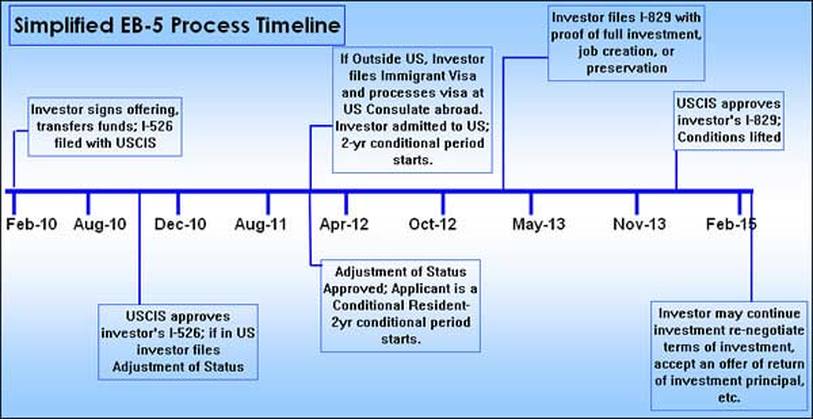EB-5 Immigration investor program visa
中文点击此处
The Immigration Act of 1990 created the Immigrant Investor Program as the fifth preference category for employment-based immigration also known as EB-5. This was the first time a category specifically facilitated the admission of immigrant investors as lawful permanent residents and currently remains the only such category to do so. The EB-5 Immigrant Investor Program is available to those immigrants who have invested, or are in the process of investing at least $1 million in a new commercial enterprise employing at least 10 full-time U.S. workers. Individuals who invest in a “targeted employment area”(TEA), however,are only required to invest a minimum of $500,000.
The purpose of the EB-5 is to stimulate the U.S. economy through job creation and capital investment by offering immigrant investors the benefits of permanent residency in the United States.
Approximately 10,000 visa numbers are allocated annually to EB-5 investors. USCIS reserves 3,000 EB-5 visas for aliens who invest in TEAs and 3,000 for aliens who invest in commercial enterprises affiliated with Regional Centers, as described below. However, participation in the investor program has traditionally been far below capacity. In the first few years after the establishment of the program, USCIS only issued 300-400 EB-5 visas. When the EB-5 visa was originally created, it did not include the Immigrant Investor Regional Center Program, a USCIS five-year immigrant investor pilot program created in 1993 in an effort to encourage more investors to apply for EB-5 permanent residency.
The purpose of the Immigrant Investor Pilot Program is to attract more foreign investors to fund businesses and projects in specific “regional centers” that would otherwise find it difficult to attract domestic investment based on current geographical market trends. By bringing such investment into areas of economic hardship and high unemployment, Congress hopes to stimulate job expansion, improved regional productivity, invest in infrastructure, and promote the growth of innovative new businesses. Congress has made the Immigrant Investor Pilot program particularly attractive to foreign investors by lowering the investment minimum to $500,000 (for a troubled business in adesignated regional center) as opposed to $1,000,000, allowing a less restrictive job creation requirement based upon the creation of “indirect” and “direct” jobs and not requiring the day to day management of the business. The Immigrant Investor Pilot Program has been extended several times, and was recently extended through September 30, 2012.
With substantial improvements made in the consistency of the EB-5 visa, investors have begun to display more confidence and interest in the program. Each successive year, the EB-5 visa has grown in popularity. For instance, in 2008, USCIS issued a total of 1,360 EB-5 visas. In 2009, this number amounted to over 4,000 EB-5 visas; half of these came directly from China. Part of this increase was due to the unprecedented economic growth of China and the creation of many independently wealthy individuals.
Approval for the EB-5 visa is high. In 2009, USCIS received 1,028 submissions of Form I-526. Of these, 966 were approved and 163 were denied. Likewise, in 2010, USCIS received 1,100 Form I-526. Of these, 955 were approved and 113 were denied. Please see EB-5 Immigrant Investor Program Memo issued by U.S. Department of Homeland Security on June 16, 2010 for details.
The EB-5 visa essentially offers a good immigration solution for those who have the financial resources to qualify. It does not require an employment offer from a U.S. employer as other employment-based immigration categories do, nor does it require a labor certificate. With the current economic downturn, USCIS has relaxed its requirements for the EB-5 program as a means to bring in more foreign investment. Most importantly, because the annual quota consistently exceeds the number of applicants, those who qualify for EB-5 status do not typically have to wait long for a visa as there is currently no visa quota backlog for the EB-5 investor category.

This is a sample timeline for the EB-5 process.

